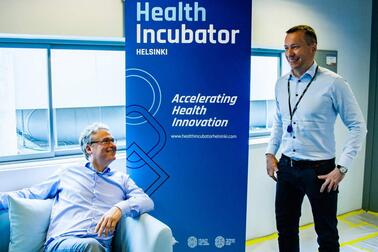Männistö says that – thanks to the report – the audiovisual industry incentive has already been brought up in the City Council.
The new City Council elected in the municipal election this spring will decide on the new City Strategy and the next budget this autumn. Männistö hopes that they will encourage the fostering of potential in creative industries.
“Nevertheless, we can and we will continue our work. We are e.g. involved in the process of hiring a project director for the Economic Development unit to focus on promoting growth in the creative industries.”
The City organisation, together with the Urban Environment Division, has already recruited an employee to increase the City's understanding of the facility needs of art and culture and to help creative sector actors find suitable temporary facilities.
Männistö also suggests that, as a major purchaser of services, the City could take advantage of the problem-solving abilities of the creative sector and, as a result, introduce innovative solutions to the City organisation.
Numminen from Avate says that the corporate world could also benefit from the creative sector. The recent report also talks about cross-pollination when different skills collide and enrich each other through fresh perspectives.
“Creators in the cultural sector are able to think in creative ways. They have plenty of untapped potential,” Numminen says.
According to Numminen, new and insightful views could be obtained from them e.g. in the planning of companies' brand strategies or in making communications more vibrant in a more diverse and interesting way.
New ways to support the industry
A lot of good things are already happening. In addition to simplifying bureaucracy in the City as mentioned by Männistö, Numminen highlights examples of the City's courage in
implementing Central Library Oodi, and when it comes to smaller pilots, a pilot named ‘90 Day Finn Digital Creative’.
The pilot was tailored to international corporate leaders, serial entrepreneurs, investors and innovators in collaboration with Helsinki Partners, which is owned by the City. The City wanted to showcase the benefits of doing business in and investing in Helsinki to the visitors.
The participants were able to familiarise themselves with Helsinki's business ecosystem and Finnish culture.







